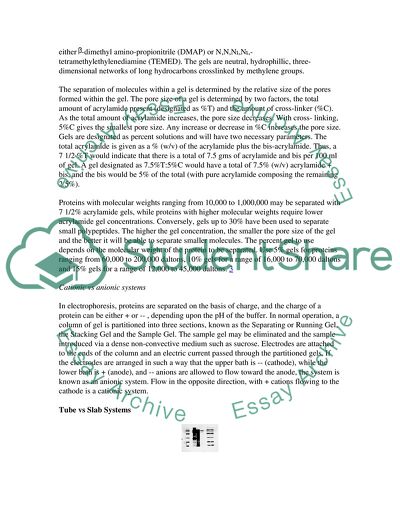Electrophoresis: The Main Technique for Molecular Separation Lab Report - 1. https://studentshare.org/biology/1814178-lab-plant-biotechnology
Electrophoresis: The Main Technique for Molecular Separation Lab Report - 1. https://studentshare.org/biology/1814178-lab-plant-biotechnology.


